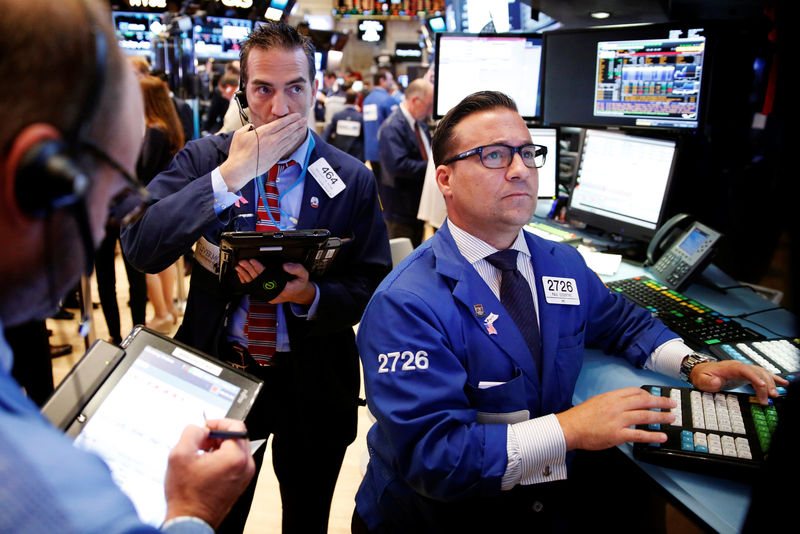By Lewis Krauskopf
NEW YORK (Reuters) - Oil prices fell on Wednesday on a surprise build in U.S. crude inventories, dragging on energy shares, and Wall Street stocks receded from record highs.
European stock indexes generally slipped after some disappointing corporate results and the dollar weakened as investors sought direction on the timing of a potential U.S. interest rate hike.
With bond yields low in developed economies as central banks maintain accommodative monetary policies, investors have sought out equities for yield.
After more than a year without setting fresh records, the U.S. benchmark S&P 500 stock index consistently has been reaching new peaks after breaking to an all-time high a month ago.
"The markets were extended, not only price-wise but psychologically have been extended," said Steve Massocca, chief investment officer with Wedbush Equity Management in San Francisco. "It’s only natural to see a pullback here and I think this pullback is something that could continue for a little while.”
The Dow Jones industrial average (DJI) fell 53.31 points, or 0.29 percent, to 18,479.74, the S&P 500 (SPX) lost 8.63 points, or 0.4 percent, to 2,173.11 and the Nasdaq Composite (IXIC) dropped 26.46 points, or 0.51 percent, to 5,199.02.
The energy sector (SPNY) was the worst-performing of the 10 major S&P groups, falling 1.5 percent.
MSCI's all-world index (MIWD00000PUS) was little changed, hovering around a one-year high. MSCI's emerging markets index (MSCIEF) gained 0.4 percent, up for a fifth straight session and hitting its highest in a year.
“For the most part international markets are continuing to outperform the U.S. in recent days ... particularly the emerging markets," said Jim Paulsen, chief investment strategist at Wells Capital Management in Minneapolis.
The pan-European FTSEurofirst 300 index (FTEU3) slipped 0.3 percent following five days of gains, after weak reports from German utility E.ON
Oil prices fell after the second-biggest weekly draw in U.S. gasoline stocks this summer was countered by an unseasonal growth in crude stockpiles.
Crude inventories rose 1.1 million barrels in the week ended Aug. 5, compared with analysts' expectations for a decrease of 1.0 million, the U.S. Energy Information Administration said.
U.S. crude (CLc1) fell 3 percent to $41.49 per barrel, while benchmark Brent (LCOc1) dropped 2.5 percent to $43.85.
The dollar (DXY) was 0.5 percent weaker against a basket of currencies. The greenback has retreated from gains in the wake of Friday's strong U.S. jobs report.
“It’s been a fairly broad trend of dollar selling this week,” said Vassili Serebriakov, FX strategist at Credit Agricole (PA:CAGR) in New York.
More clarity about the U.S. economy's health and the next move on rates from the Federal Reserve could come with Friday's release of July retail sales and a speech by Fed Chair Janet Yellen later this month.
U.S. Treasury prices edged up in line with global bonds as limited economic data and concern about the continued effectiveness of central banks' policies gave safe-haven U.S. government debt a bump.

The benchmark 10-year Treasury note (US10YT=RR) was last up 12/32 in price to yield 1.5040 percent.